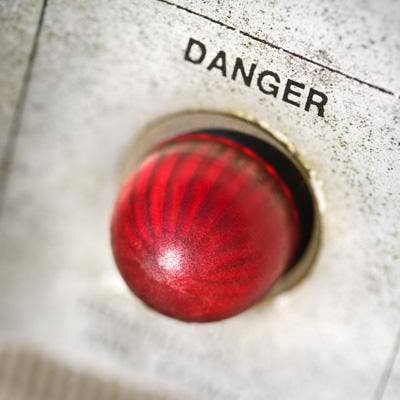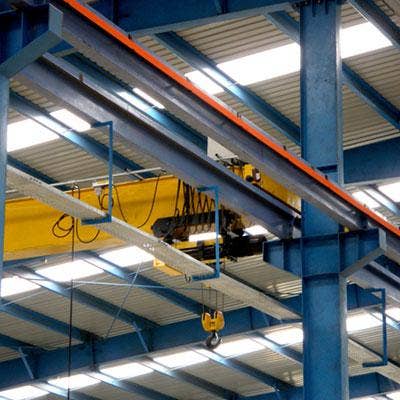IIoT Vendor Spotlight: Startup Mocana Leverages Channel Partners To Secure Industrial Control Systems

A New Security Startup For Industrial IoT
IoT security startup Mocana in May said it has raised $11 million in additional investment from Sway Ventures, Shasta Ventures, Trident Capital Fund and GE Ventures. The company, which makes IoT security solutions for industrial control systems, said that it will use this funding to advance its IoT security platform in the Industrial IoT market, as well as accelerate innovation and drive growth. Mocana's platform provides a full-stack toolset for securing connected systems, from the gateway to the cloud.
CRN sat down with Keao Caindec, vice president of marketing at Mocana, to talk about the startup's future strategy around Industrial IoT and the channel.

Break down Mocana's industrial IoT platform and what you offer for customers.
We're an embedded security and software provider – we provide software for mission-critical Internet of Things applications. Our software fits on resource-constrained devices like microprocessor boards and controllers, and we're embedded into chips and sit in larger machines – whether it's wearable IoT devices for industrial control systems, or IoT gateways.
We're on 100 million devices today. Our customers are embedding our software into their products as OEMs to sell to end users.

Who are some of your customers? What vertical markets are you targeting?
Companies like GE, Bosch, Schneider Electric, build our software into their products to harden them and make more difficult to attack.
Our customers build smart meters for managing power in homes and buildings, thermostats, HVAC systems, surveillance cameras, or industrial controllers in power substations. We're even built into vehicles and aircrafts.
We're mostly industrial, but we also work with a variety of cloud providers and carriers who are developing their own IoT cloud services.
When people think of IoT, they think of more consumer applications – the reality is that the bulk of what makes up IoT is a variety of industrial, smart city and smart building devices that make up billions of devices out there today and they all need to be secured.

What is your strategy around securing manufacturing floors and industrial applications?
Mocana's mission is to secure the Internet of Things. There's a wide range of security measures in devices today, and some of it is nonexistent with barely password authentication, while other devices are secured down to the silicon.
We've seen so many attacks out there today. More recent ones have been on business and IT systems like WannaCry, and have focused on leveraging Microsoft's vulnerabilities to implement ransomware. Others like BrickerBot have introduced malware that makes your device unusable.
What's concerning is these attacks have made it to the business and IT networks – so if they contain and release malware into the OT network, they can take over industrial control systems. That’s where there's a lot of activity now with standards groups and the government to implement new standards for cybersecurity.

Do you think that end users in the Industrial IoT market are aware about the security challenges in this space?
Mocana works with the chief information security officers and CTOs of the industrial space. CSOs recognize that there are significant issues around the vulnerability of industrial systems. They're pursuing a number of initiatives to secure systems, like hardening devices with identity controls and authentication measures, or using encryption in gateways to secure communications.

How does the gap between the IT and operational technology worlds play into the security landscape for Industrial IoT?
In the IT world, CIOs and CSOs are used to leveraging perimeter-based security, endpoint security and firewalls, or access controls. On the OT side, they're used to security being part of a safety and reliability strategy, and looking at how to protect their systems' uptime. They would run those OT networks completely separate from IT and the enterprise. Now with Industrial IoT, the enterprise networks have business and analytics systems that need to make sense of that industrial data from a supply chain perspective.
We're seeing some challenges, but also some ways the sides can work together. OT can secure networks using basic network security, network protocols, firewalls, and through implementing standards-based authentication and encryption.
On the other side, IT wants to secure IoT devices within the enterprise – like HVAC systems, fire and safety systems, and surveillance, and even printers. All these things are connected to the internet. IT has a lot to learn from the OT side.

Talk about your technology channel partners, cloud partners and systems integrator partners.
Mocana has a very broad ecosystem of hardware provider, chip manufacturers and software provider partners. These companies provide secure chip technologies for companies like Intel, ARM and Qualcomm on the chip side.
The channel is a big part of how systems are built. Contract manufacturers and distributors, and their reseller channels, build Mocana into systems that are built by contract manufacturers. The channel is a big part of what we're doing, and we're working with our integration partners, hardware and software partners, to integrate Mocana into platforms that can be sold by resellers and distributors to manufacturers.

What are Mocana's future goals around its platform and the channel, especially after the $11 million in funding you received in May?
The funding will be used for market expansion, expanding our sales and developing new technologies. Mocana has built one of the most comprehensive IoT security platforms, and we're developing new technology that will bring more insight and analytics into the cybersecurity ecosystem.
I think the most important things we can do for the IoT security industry is to collaborate to make it easier for developers and device designers to use strong security in their systems. We're working with chip vendors, software companies and the channel to create products and solutions that make it easier to develop software, which can leverage stronger hardware and stronger standards.